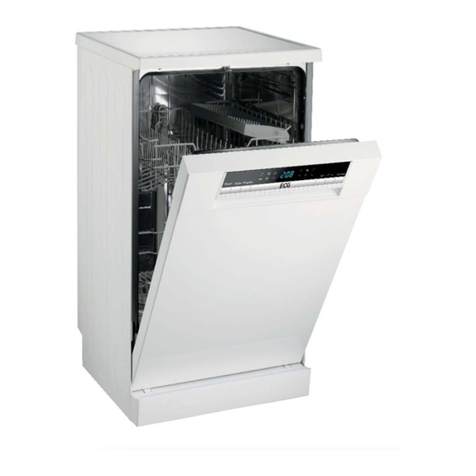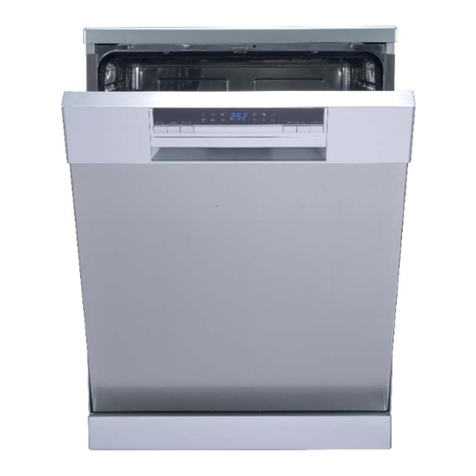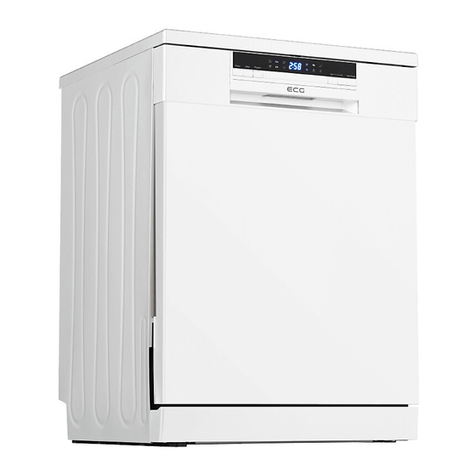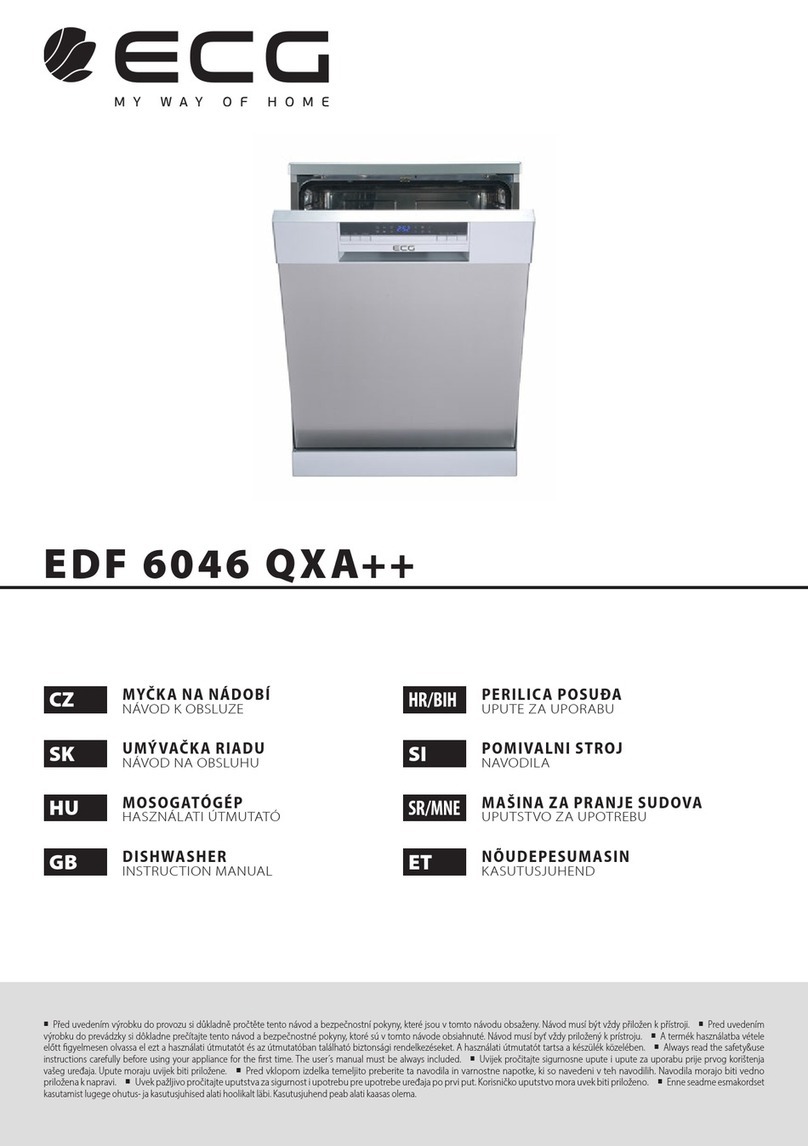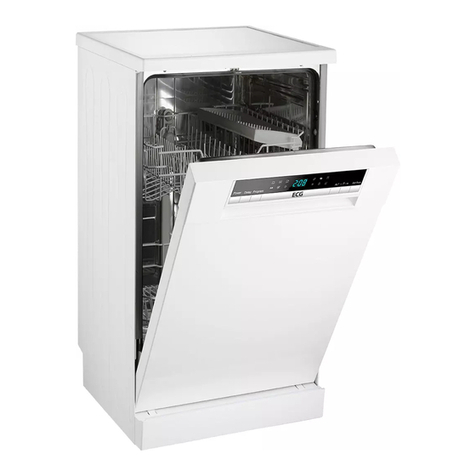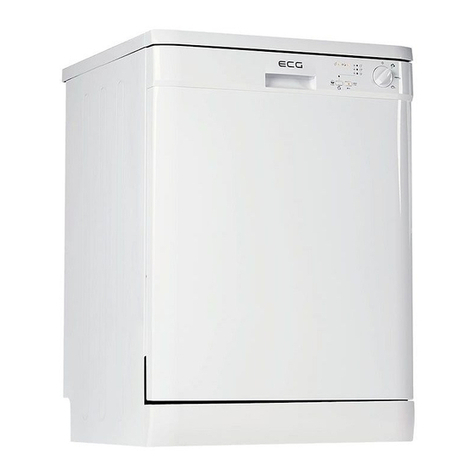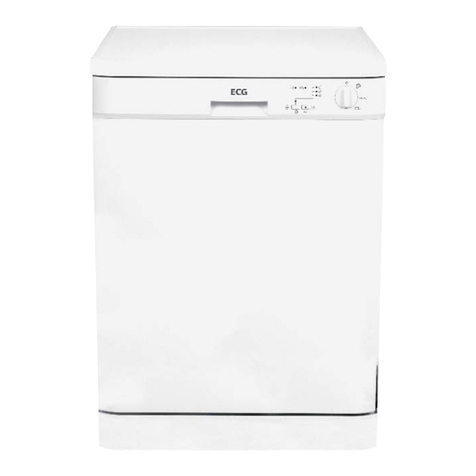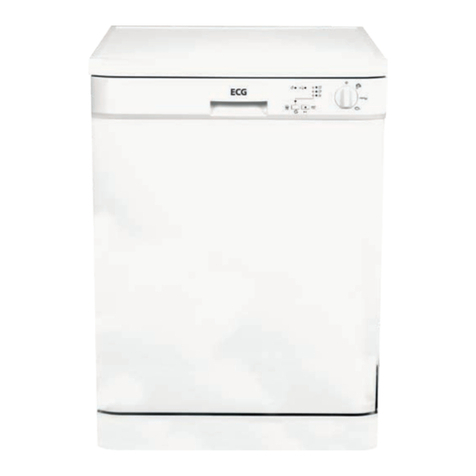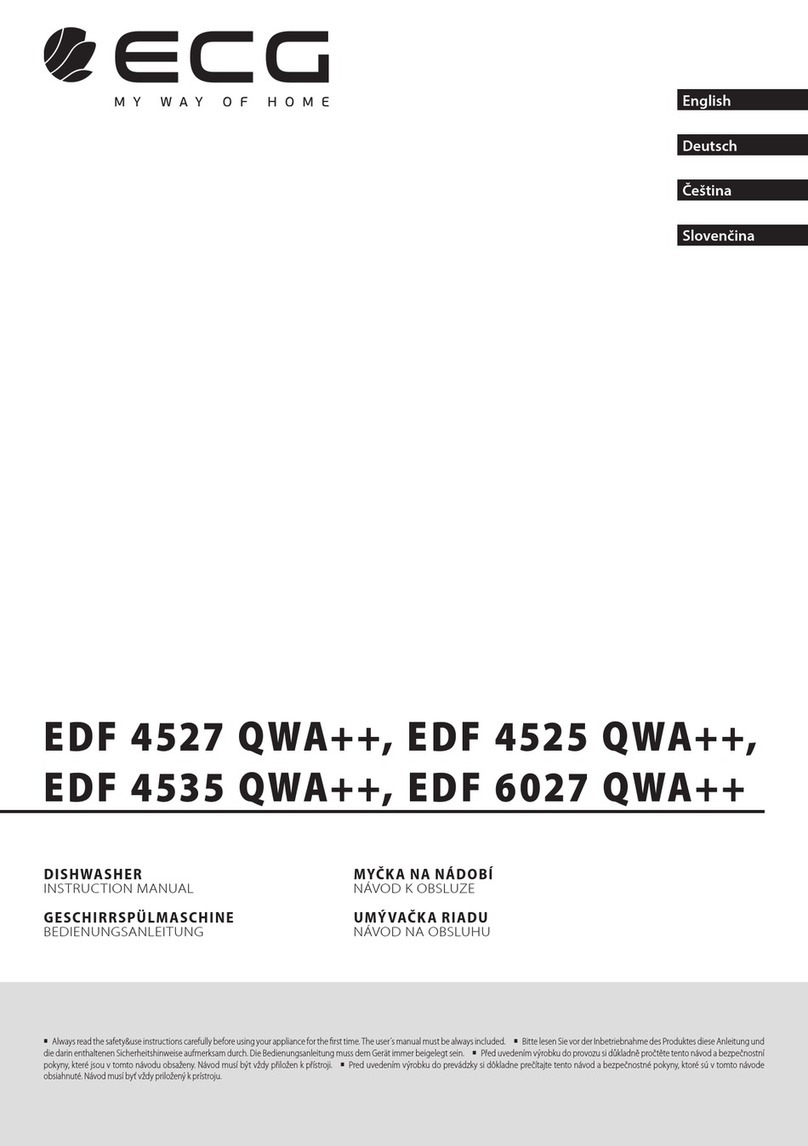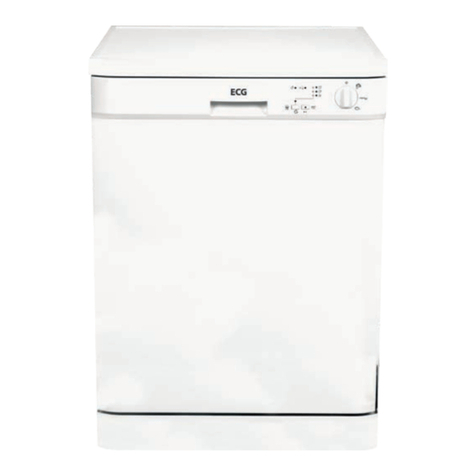
English
English
10
When regulating salt consumption, please do the following:
1. Remove the bottom basket and unscrew the tank cap.
2. Insert a funnel (supplied) into the opening of the dispenser and pour into it about 1.5 kg of salt.
3. Rell the reservoir with water. A small amount of water usually overows from the dispenser.
4. After lling the container, screw the cap on tightly.
5. When the salt tank is full, the salt indicator light stops illuminating.
6. Immediately after lling the salt reservoirs, start a washing programme (we recommend the quick wash
programme). Failing to do so can lead to salt water damaging the lter system, pump or other important
component. In such case, the warranty shall be void.
Notes:
• Salt should be added when on the control panel the salt indicator ( ) lights up. As the salt dissolves
quickly, the salt indicator is lit even after the salt has been replenished. If there is no salt indicator on the
control panel (for some types), estimate the time of adding salt to the softener by the number of wash
cycles performed.
• If salt has spilled, run a rinse or quick programme to remove it.
Water softener
Set the water softener manually using the rotary control of water hardness. The function of the water softener
is to remove from the water minerals and salts that could adversely aect the operation of the dishwasher. The
more minerals in it, the harder the water. The water softener can be adjusted according to the hardness level
of the water in your area. Your water supplier should provide you with information about your water hardness.
Setting the salt consumption
The dishwasher allows to regulate the consumption of salt depending on the hardness of the water used. Thus
can be the salt consumption optimized and regulated.
When regulating salt consumption, please do the following:
1. Close the door, switch on the appliance.
2. Within 60 seconds of switching on the appliance, press the Pprogramme button for more than 5 seconds
to enter the water softener setting mode.
3. Press the programme button again to select the correct set for your local environment, the settings will
change in the following order: H1 -> H2 -> H3 -> H4 -> H5 -> H6.
4. To exit setup mode, press the zpower button.
WATER HARDNESS SCALE Level setting Salt consumption
German (dH) French (fH) British (Clarke) Mmol/l
0–5 0–9 0–6 0–0.94 H1 0
6–11 10–20 7–14 1.0–2.0 H2 9
12–17 21–30 15–21 2.1–3.0 H3 12
18–22 31–40 22–28 3.1–4.0 H4 20
23–34 41–60 29–42 4.1–6.0 H5 30
35–55 61–98 43–69 6.1–9.8 H6 60


